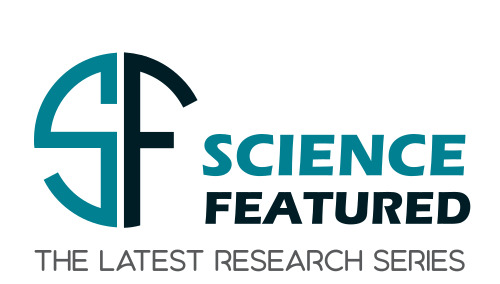Researchers from the University of New Mexico have uncovered significant insights into the immune and inflammatory responses associated with pancreatic ductal adenocarcinoma (PDAC), a notoriously aggressive cancer with limited treatment options. The study, led by Dr. Ian Rabinowitz, along with his team including Kathryn Brayer, Dr. Joshua Hanson, Dr. Shashank Cingam, Cathleen Martinez, and Dr. Scott Ness, utilized RNA-sequencing to analyze both tumor and normal pancreatic tissues, revealing crucial differences that could pave the way for new therapeutic strategies. The work has been published in the peer-reviewed journal PLOS ONE.
Pancreatic ductal adenocarcinoma is among the deadliest forms of cancer, with a very low five-year survival rate for stage 4 patients. The study’s primary motivation was to understand the role of the pancreas microbiome, particularly the presence of the fungus Malassezia, in PDAC progression. The team discovered Malassezia RNA in both cancerous and normal pancreatic tissues, although its presence did not correlate with tumor growth. However, they identified a set of immune and inflammatory genes significantly up-regulated in PDAC tissues compared to normal ones, suggesting a pivotal role in cancer progression.
“The presence of Malassezia alone was not linked to tumor growth, but the inflammatory response it triggers could be key in understanding PDAC progression,” explained, Dr. Rabinowitz. By employing gene set enrichment analysis, the researchers found that activation of the complement cascade and inflammation were prominent in PDAC samples. These findings indicate that these pathways could be crucial in driving the aggressive nature of this cancer.
The team conducted a comprehensive analysis of matched tumor-normal tissue samples, revealing that the tumor samples exhibited more heterogeneous gene expression patterns compared to the relatively homogenous normal samples. Thousands of genes were found to be differentially expressed, with roughly half up-regulated and half down-regulated in tumors. Notably, genes involved in the complement cascade, complement activation, and inflammatory responses were significantly enriched in the tumor samples.
Dr. Rabinowitz noted, “Our differential gene expression analysis showed that the tumor microenvironment in PDAC is highly immunosuppressive, which supports tumor proliferation and survival. This highlights the potential of targeting the complement and inflammatory pathways in developing new treatments.”
The study also highlighted the overexpression of key genes such as C2, Dectin-1, and Galectin-3 in tumor samples. Galectin-3, in particular, has been associated with tumor cell adhesion, proliferation, differentiation, and metastasis. The upregulation of Galectin-3 and Dectin-1 in PDAC tissues suggests that these molecules may facilitate tumor progression through inflammation and immune evasion mechanisms.
“Our findings on Galectin-3 and Dectin-1 underscore their potential as therapeutic targets in PDAC,” said Dr. Rabinowitz. “By inhibiting these molecules, we might be able to disrupt the tumor’s ability to manipulate the immune system and promote its own growth.”
The research team also explored the gene expression profiles associated with the KRAS signaling pathway, known for its role in PDAC. They identified several genes that overlapped between the KRAS pathway and the complement and inflammatory pathways, suggesting a complex interplay between these signaling networks in driving pancreatic cancer.
Dr. Rabinowitz added, “The interaction between KRAS signaling and immune pathways such as the complement cascade and inflammation points to a multifaceted approach in tackling PDAC. Targeting these interconnected pathways could yield more effective therapeutic outcomes.”
In summary, this groundbreaking study provides critical insights into the immune and inflammatory landscape of pancreatic cancer. By identifying key pathways and molecules involved in PDAC progression, the researchers have laid the groundwork for future studies aimed at developing targeted therapies that could improve the prognosis for patients with this devastating disease.
Journal Reference
Brayer, K. J., Hanson, J. A., Cingam, S., Martinez, C., Ness, S. A., & Rabinowitz, I. (2023). “The inflammatory response of human pancreatic cancer samples compared to normal controls.” PLOS ONE, 18(11), e0284232. DOI: https://doi.org/10.1371/journal.pone.0284232
About the Authors

Dr. Ian Rabinowitz and Dr. Shashank Cingam are medical doctors. and work as medical hematologist /medical oncologist. Dr Cingam is a bone marrow trans-planter, while Dr. Rabinowitz has a more general practice. Dr Rabinowitz has been involved in many clinical trials the most significant being the IRIS (Imatinib vs. interferon and cytarabine) in chronic myeloid leukemia. His major basic science work was in determining the mutations in von Willebrand’s Disease. Kathryn Brayer PhD and Scott Ness PhD work in the laboratory in Molecular Medicine, concentrating on the role of c-myb in salivary gland adenoid cystic carcinoma. They graciously contributed their time and expertise to the project.

All the authors are associated with the University of New Mexico (UNM).














































